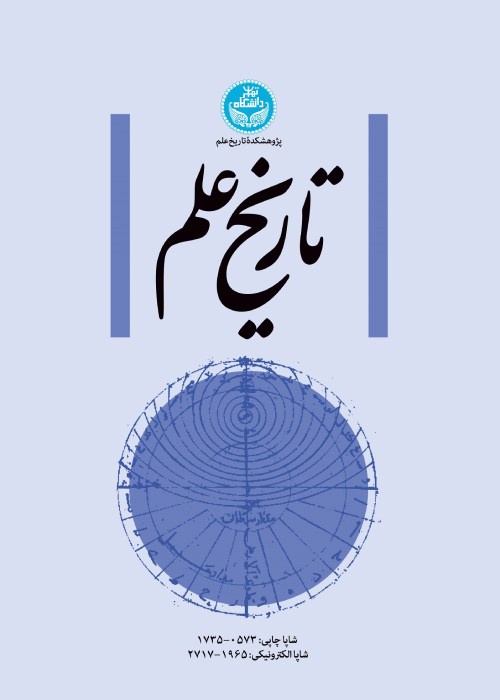Comparative study of the image of catapult war tools in the manuscript of the Ilkhanid Jami ʿ al-tawārīkh with the scientific mechanism of tools in scientific sources
Author(s):
Article Type:
Research/Original Article (دارای رتبه معتبر)
Abstract:
The catapult is a weapon of war that was widely used in the early Islamic period and before the invention of the cannon. In pictures from the manuscript of the Ilkhanid Jamiʿ al-tawārīkh, images of this weapon were illustrated in various scenes. Therefore, identifying the representation, visual quality, and image of catapult tools in the paintings of the manuscript of the Ilkhanid Jamiʿ al-tawārīkh and also recognizing the degree of adherence of the paintings of Jamiʿ al-tawārīkh manuscript to scientific principles in illustrating catapult tools and the arrangements adopted by painters has been done. In this regard, research questions are: 1- How is the image of the catapult tool represented and illustrated in the paintings of the Ilkhanid Jamiʿ al-tawārīkh manuscript? 2. What is the visual quality of the catapult in the paintings of the Jamiʿ al-tawārīkh manuscript? 3- To what extent have the paintings of Jamiʿ al-tawārīkh manuscript adhered to scientific principles? This research has been done in a descriptive-analytical method with a comparative approach and using documentary sources and libraries the Case Studies include 5 paintings of the Ilkhanid Jamiʿ al-tawārīkh manuscript, which have been selected in a non-probabilistic and purposeful manner and these cases have been compared with two examples of images from scientific sources, namely the book of weapons and killing tools by Ehsan Hindi and the book of Al-Aniq Fi Al-Manajniq by Ibn Arnbagha Al-Zardkash and the method of analyzing the images is qualitative. In this comparison, the images of catapults illustrated in the paintings of the Ilkhanid Jamiʿ al-tawārīkh manuscript are analyzed based on the scientific mechanism of this weapon and the degree of adherence of the illustrated samples to the scientific structure of the instrument has been measured. Also, the results of the research show that the painters did not have complete and accurate knowledge of the scientific mechanism of the catapult tool and have merely illustrated its appearance also, the study of the samples shows that all the samples are illustrated based on catapults of Arabic or Persian and Turkish type and Roman or Farangi and Soltani types are not seen among the samples.
Keywords:
Language:
Persian
Published:
History of Science, Volume:19 Issue: 2, 2022
Pages:
377 to 412
magiran.com/p2442572
دانلود و مطالعه متن این مقاله با یکی از روشهای زیر امکان پذیر است:
اشتراک شخصی
با عضویت و پرداخت آنلاین حق اشتراک یکساله به مبلغ 1,390,000ريال میتوانید 70 عنوان مطلب دانلود کنید!
اشتراک سازمانی
به کتابخانه دانشگاه یا محل کار خود پیشنهاد کنید تا اشتراک سازمانی این پایگاه را برای دسترسی نامحدود همه کاربران به متن مطالب تهیه نمایند!
توجه!
- حق عضویت دریافتی صرف حمایت از نشریات عضو و نگهداری، تکمیل و توسعه مگیران میشود.
- پرداخت حق اشتراک و دانلود مقالات اجازه بازنشر آن در سایر رسانههای چاپی و دیجیتال را به کاربر نمیدهد.
دسترسی سراسری کاربران دانشگاه پیام نور!
اعضای هیئت علمی و دانشجویان دانشگاه پیام نور در سراسر کشور، در صورت ثبت نام با ایمیل دانشگاهی، تا پایان فروردین ماه 1403 به مقالات سایت دسترسی خواهند داشت!
In order to view content subscription is required
Personal subscription
Subscribe magiran.com for 70 € euros via PayPal and download 70 articles during a year.
Organization subscription
Please contact us to subscribe your university or library for unlimited access!




